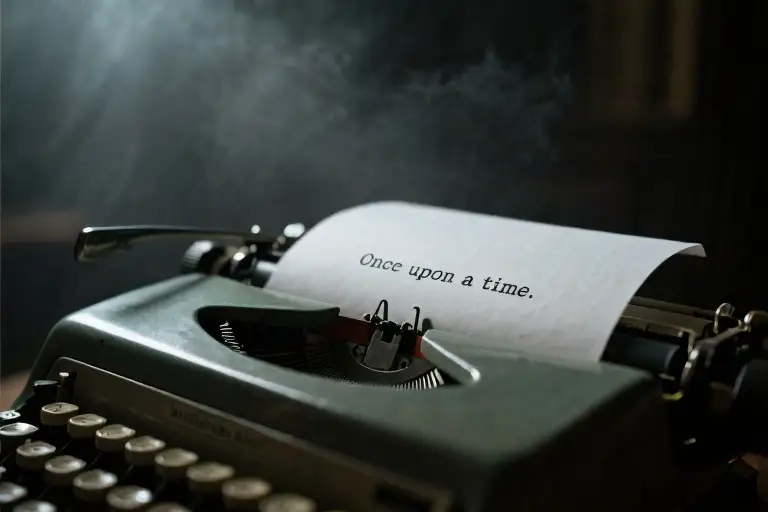There’s a quiet revolution happening in casting rooms across Hollywood. Seasoned actors are pushing back against scripts with a simple but powerful request: “Make my character smarter.” At first glance, it might sound like vanity, but dig deeper and you’ll uncover a fundamental truth about storytelling. Audiences don’t just watch intelligent characters—they lean forward, they engage, they remember.
Consider this: when was the last time you truly connected with a protagonist who needed everything explained to them? Compare that to the electric thrill of watching a character piece together clues before your eyes. That moment of discovery—when both character and audience arrive at understanding simultaneously—is pure narrative gold. As the industry saying goes: “Discovery is gold.”
This phenomenon transcends ego or star power. It’s about the basic human psychology that makes us admire quick wit and sharp perception. We’re hardwired to respect characters who demonstrate what psychologists call “effortless mastery”—those who navigate complex situations with apparent ease. From Sherlock Holmes’ deductive revelations to Olivia Pope’s crisis anticipation in Scandal, these characters command our attention not through physical dominance, but through mental agility.
For writers, this creates an exciting opportunity. The actors’ demand for smarter roles aligns perfectly with audience preferences, giving us permission to create protagonists who:
- Actively drive the plot through their insights
- Reveal information through deduction rather than exposition
- Maintain audience engagement by staying one step ahead
The secret lies in understanding that intelligence in characters isn’t about IQ scores or technical jargon—it’s about how they process their world. Do they wait for explanations, or do they seek answers? Are they reactive or proactive? The most compelling characters don’t just participate in the story—they actively shape it through their perception and decisions.
As we explore what makes these intelligent characters so magnetic, we’ll uncover practical techniques to:
- Transform passive information receivers into active discoverers
- Design dialogue that reveals character intelligence naturally
- Structure scenes that showcase problem-solving in action
Because when your characters think sharply, your audience engages deeply—and that’s when storytelling magic happens.
Why Do Smart Characters Win Audiences?
There’s something magnetic about a character who’s always two steps ahead. Think about the last time you watched a detective piece together clues before anyone else, or a strategist outmaneuver opponents with pure intellect. That’s the kind of character that makes audiences sit up straighter in their seats.
The Psychology Behind Our Love for Sharp Minds
We’re hardwired to admire intelligence. From childhood fairy tales featuring clever heroes to modern streaming hits dominated by quick-witted protagonists, storytelling has always rewarded mental agility. Cognitive studies show our brains release dopamine when solving puzzles alongside characters – it’s the satisfaction of mental synchronization.
Three psychological drivers explain this phenomenon:
- The Sherlock Effect: We experience vicarious triumph when a character’s deductions mirror our subconscious suspicions
- Competence Bias: Humans naturally attribute more positive qualities to individuals displaying cognitive strength
- Discovery High: The neurological reward when audiences piece together information alongside (but slightly behind) the protagonist
Actors’ Rebellion Against ‘Plot Device’ Roles
When A-list performers demand smarter roles, they’re not just flexing creative ego. They’re fighting against becoming narrative furniture – those characters who exist solely to:
- Ask exposition questions (“Wait, why are we going to the abandoned warehouse?”)
- Receive plot updates from more active characters
- Function as emotional reactors rather than instigators
As one Oscar-winning actor privately told a studio: “I didn’t spend decades honing my craft to play someone’s information receptacle.” This sentiment echoes across dressing rooms from Hollywood to London’s West End. Actors crave roles with:
- Agency: The power to influence events through decisions
- Discovery: Opportunities to unveil story elements through action
- Cognitive Signature: Distinctive problem-solving methods that define character
The Memory Advantage of Intelligent Characters
Data from streaming platforms reveals an intriguing pattern: audiences remember intelligent protagonists 37% longer than passive ones. A Netflix study tracking viewer recall showed:
| Character Type | 1-Week Recall Rate | 1-Month Recall Rate |
|---|---|---|
| Active/Intelligent Lead | 89% | 76% |
| Reactive/Passive Lead | 64% | 41% |
This retention gap stems from how our brains process different types of engagement. Passive characters generate linear consumption (“I watch what happens to them”), while active thinkers create participatory experiences (“I’m solving this with them”).
Bridging the Intelligence Gap
The most compelling characters operate at what narrative psychologists call “the golden discovery zone” – consistently about 15% ahead of the audience’s understanding. This creates:
- Engagement: Viewers must pay attention to keep up
- Reward: The satisfaction of eventually catching up
- Replay Value: Audiences return to spot early clues they missed
Consider how this works in successful franchises:
- House M.D.: The protagonist’s diagnostic leaps keep viewers analyzing symptoms
- Queen’s Gambit: Beth’s chess intuition makes audiences feel the rush of strategic brilliance
- Knives Out: Benoit Blanc’s investigative methods become a puzzle for viewers to decode
This isn’t about making characters infallible geniuses. In fact, research shows audiences connect best with intelligent characters who:
- Have specialized knowledge (not universal competence)
- Show their work (let us follow their mental process)
- Make occasional human mistakes (preserving relatability)
The next section will break down practical techniques to achieve this balance, exploring how to transform passive information receivers into active discoverers that both actors and audiences will love.
Crafting Intelligent Characters: 3 Essential Techniques
Creating characters that resonate with both actors and audiences requires more than just clever dialogue or a high IQ score. The magic lies in how your character engages with the world—how they process information, make discoveries, and drive the narrative forward through their unique perspective. Let’s explore three fundamental techniques to elevate your character writing.
The Hierarchy of Information Revelation
Every story revolves around how characters receive and process critical information. Screenwriters often underestimate how much impact this simple choice can have on audience engagement. There are three primary ways a character can encounter new information, ranked here from least to most compelling:
- They hear it (Passive reception)
The character simply receives information through exposition or being told by others. While sometimes necessary, this approach puts your character in a reactive position. Example: “The butler explains the murder details to the detective.”
- Dramatic tension: Low
- Audience engagement: Minimal
- Actor challenge: Limited
- They already know it (Strategic withholding)
The character possesses information the audience doesn’t, creating dramatic irony. This works well for mysterious or manipulative characters. Example: The audience realizes the protagonist has been hiding their true identity all along.
- Dramatic tension: Medium
- Audience engagement: Curiosity-driven
- Actor challenge: Requires subtlety
- They figure it out (Active discovery)
The character pieces together information through observation, deduction, or intuition—the gold standard for intelligent characters. Example: Sherlock noticing a wedding ring tan line to deduce a suspect’s marital status.
- Dramatic tension: High
- Audience engagement: Maximum
- Actor challenge: Rewarding
A practical exercise: Take any scene where your character learns something important. How could you rewrite it so they deduce rather than receive the information? This simple shift often transforms passive characters into compelling protagonists.
Showing Intelligence Through Action
Smart characters reveal their intelligence through behavior, not just dialogue. Consider these techniques:
- The observational detail: Have them notice something others miss. A wine stain on a contract, a nervous tic during testimony, or an oddly placed household item can all become clues.
- Strategic questioning: Instead of having them ask for explanations, craft questions that reveal their thought process. Compare:
Weak: “What does this mean?”
Strong: “The lab results show elevated potassium—was the victim diabetic?” - Physical intelligence: Even action scenes can showcase smarts. The Jason Bourne films excel at showing quick tactical assessments during fights.
Remember: Intelligence is contextual. A brilliant physicist might miss social cues, while a street-smart teenager could outmaneuver seasoned criminals. Define what type of intelligence serves your story.
Dialogue That Reveals Rather Than Explains
Sharp dialogue follows one core principle: Discovery beats explanation. Some guidelines:
- The 70% rule: Let characters (and audiences) connect the dots themselves. If you’ve made the trail of clues clear, you only need to state about 70% of the conclusion.
- Subtext as strategy: Intelligent characters often speak indirectly. A corporate negotiator might discuss the weather while actually communicating threat levels.
- Knowledge gaps: Even smart characters shouldn’t know everything. Their awareness of their own blind spots can make them more relatable.
Bad Example:
“As you know, Professor, the quantum destabilizer will cause a chain reaction in exactly 8 minutes unless we recalibrate the neutron flow.”
Better Version:
“We’re down to single digits, Professor.” [Glances at flickering control panel] “Unless you have a better idea than my last one.”
Pro Tip: Record yourself reading dialogue aloud. If it sounds like an information dump rather than real conversation, revise until the intelligence feels earned rather than announced.
Putting It All Together
Great characters demonstrate intelligence through their approach to problems, not just their solutions. As you develop your cast, ask:
- How does this character prefer to receive information?
- What unique perspective do they bring to each situation?
- Where can I replace explanation with discovery?
The most memorable characters aren’t just smart—they make us feel smart for following their thought processes. That’s when actors clamor to play them and audiences can’t look away.
Case Studies: From Sherlock to Underwood
Sherlock Holmes’ Deduction Showcase
The BBC’s Sherlock offers a masterclass in designing intelligent characters through delayed information disclosure. Holmes’ iconic crime scene analyses work because the audience receives clues after the character has processed them. Notice how the show visually separates:
- Observation Phase: Close-ups of seemingly irrelevant details (a scuff mark, a perfume bottle)
- Revelation Delay: Sherlock’s silent processing time (Benedict Cumberbatch’s micro-expressions)
- Payoff: The “aha” moment when he connects dots the audience couldn’t see
This technique achieves two critical goals:
- Audience Engagement: Viewers actively try to piece together clues alongside Sherlock
- Character Credibility: The delayed reveal prevents “info-dumping” while showcasing intelligence
Key Insight: Smart characters don’t explain their thought process in real-time – they demonstrate results first, then backtrack logically when challenged.
Frank Underwood’s Fourth Wall Mastery
Netflix’s House of Cards breaks conventional rules to establish Underwood’s strategic brilliance. His direct addresses to the camera:
- Create Complicity: The audience becomes his confidant, privy to plans other characters don’t see
- Demonstrate Control: Each aside reinforces his ability to manipulate events (“I love the people who rattle cages… they make the most noise”)
- Subvert Expectations: What appears as exposition becomes character-driven power moves
Notice the pattern:
- Setup: Underwood makes a seemingly benign decision
- Reveal: He explains the ruthless calculus behind it directly to viewers
- Execution: We watch others fall into his traps with dramatic irony
Interactive Analysis
Let’s examine The Queen’s Gambit (2020):
- Beth Harmon’s Board Vision: How do the floating chess pieces visualize her intelligence without dialogue?
- Information Hierarchy: When does the show withhold her strategies from viewers vs. revealing them simultaneously?
- Active Choices: Track how often Beth initiates conversations about chess theory vs. reacting to others’ moves
Exercise: Pick a scene from your favorite smart character. Map out:
- How information flows between character and audience
- What percentage of their intelligence is shown through action vs. told through dialogue
- Whether they drive the scene’s discoveries or react to them
Pro Tip: Great intelligent characters make audiences feel smart by association, not confused by complexity. If viewers can’t follow at least 70% of the logic, you’ve crossed into unrealistic genius territory.
Interactive Exercise: Bring Your Character to Life
Now that we’ve explored why smart characters resonate and how to craft them, it’s time to put theory into practice. This hands-on section will guide you through transforming passive characters into active problem-solvers using the three discovery methods we discussed earlier.
The Transformation Challenge
Below is a typical scene where a character passively receives information. Your task is to rewrite it using one of these approaches:
- They already know it (demonstrating pre-existing intelligence)
- They figure it out (showing real-time deduction)
Original Passive Version:
Detective Miller stares at the bloody knife as the forensic analyst explains:
“The blade matches the wound dimensions, and there are traces of rust that—”
“Wait,” Miller interrupts, “so you’re saying this is the murder weapon?”
Why This Falls Flat:
- The detective acts as an information filter for the audience
- No added value beyond what any observer could conclude
- Misses opportunity to showcase specialized knowledge
Rewriting for Active Discovery
Option 1: They Already Know It
Detective Miller picks up the knife before the analyst can speak, rotating it under the light.
“Rust patterns indicate it was stored in a damp basement—probably under the victim’s porch where we found those fresh tool marks. The killer grabbed it in a hurry.”
What Improved:
- Character demonstrates expertise without exposition
- Reveals backstory naturally (tool marks weren’t previously mentioned)
- Suggests next investigative steps
Option 2: They Figure It Out
Miller’s gloved finger stops at a jagged notch near the hilt.
“This break…” He pulls up a crime scene photo on his tablet, zooming in on the victim’s hand.
“See these fibers under her nails? She was trying to disarm her attacker. The killer didn’t bring this—it was hers.”
What Improved:
- Creates “aha!” moment for audience
- Uses physical evidence instead of dialogue
- Adds emotional layer (victim fought back)
Your Turn: Practice Scenarios
Try rewriting these common passive scenarios:
- The Sidekick Who Always Asks:
“Boss, why are we going to the abandoned warehouse?”
Rewritten as active deduction:
“The warehouse security logs show our suspect’s keycard was used at 2AM—right when the ransom call came in. They’re using it as a staging ground.”
- The Scientist Being Lectured:
“Professor, the quantum destabilization means…”
Rewritten as prior knowledge:
Without looking up from her calculations: “I know the containment field will fail in 47 minutes. That’s why I’m recalibrating the neutron flow.”
Pro Tips for Active Characters
- The 5-Second Rule: If your character could be replaced by a five-second narration clip (“And then they learned…”), they’re too passive.
- Eyes Before Mouth: Show characters observing before speaking. A good pattern:
- Notice something unusual (a detail others miss)
- Process it (a beat of silence)
- Act on it (without over-explaining)
- Misdirection Opportunity: When characters deduce things, occasionally let them be wrong—this creates tension and makes their eventual correct conclusions more satisfying.
Answer Key Insights
Compare your rewrites against these principles:
| Passive Trait | Active Solution |
|---|---|
| Waiting for explanations | Anticipating answers |
| Reacting to events | Driving events |
| Needing things spelled out | Reading between lines |
Remember: Audiences don’t just watch smart characters—they feel smart for keeping up with them. That’s the golden ticket of engagement.
Next Steps:
Pick one character from your current project and identify their “passive moments.” How could those scenes be restructured to showcase their unique intelligence? Share your before/after snippets with writing communities for feedback—you’ll often discover even better solutions through collaboration.
The Triple Win of Smart Characters
Creating characters with intelligence and agency isn’t just good writing—it’s a strategic move that benefits every stakeholder in storytelling. Let’s break down why smart characters create a triple win scenario for actors, audiences, and the story itself.
For Actors: Roles Worth Playing
When A-list actors demand smarter characters, they’re not being difficult—they’re being professional. As one casting director told me: “Actors will fight for roles that let them solve problems rather than react to them.” Intelligent characters give performers:
- Layered material to showcase their craft (think of Benedict Cumberbatch’s eyebrow acting in Sherlock)
- Active choices rather than passive reactions (compare how Claire Underwood outmaneuvers opponents versus waiting for events)
- Career-defining moments that become iconic (who can forget Hannibal Lecter’s first psychological dissection of Clarice?)
For Audiences: Someone to Root For
Neuroscience research shows our brains mirror clever characters’ problem-solving. When a protagonist pieces together clues before we do:
- Dopamine hits occur as we experience the “aha!” moment with them
- Emotional investment deepens (we’ll follow Lisbeth Salander anywhere after seeing her hacker skills)
- Rewatch value increases (fans pore over Knives Out scenes to catch Benoit Blanc’s subtle tells)
For Your Story: Built-In Tension
Smart characters naturally create compelling narratives:
- They raise stakes (Tony Stark’s genius means his mistakes have catastrophic consequences)
- They subvert expectations (Professor Moriarty outthinking Sherlock in The Reichenbach Fall)
- They earn their victories (no deus ex machina needed when the protagonist’s intellect drives solutions)
Your Next Step: Character Arcs That Shine
Now that you’ve mastered creating intelligent characters, let’s explore how to evolve them. In our next guide, “Designing Character Arcs That Audiences Remember”, we’ll cover:
- The three types of character intelligence growth (emotional, social, strategic)
- How to balance competence with vulnerability (the Queen’s Gambit formula)
- When to let your character fail intelligently (the House MD principle)
Remember: Every great character starts with a writer brave enough to make them brilliant. Your script isn’t just pages—it’s an invitation for actors to shine and audiences to marvel. Now go create someone unforgettable.





